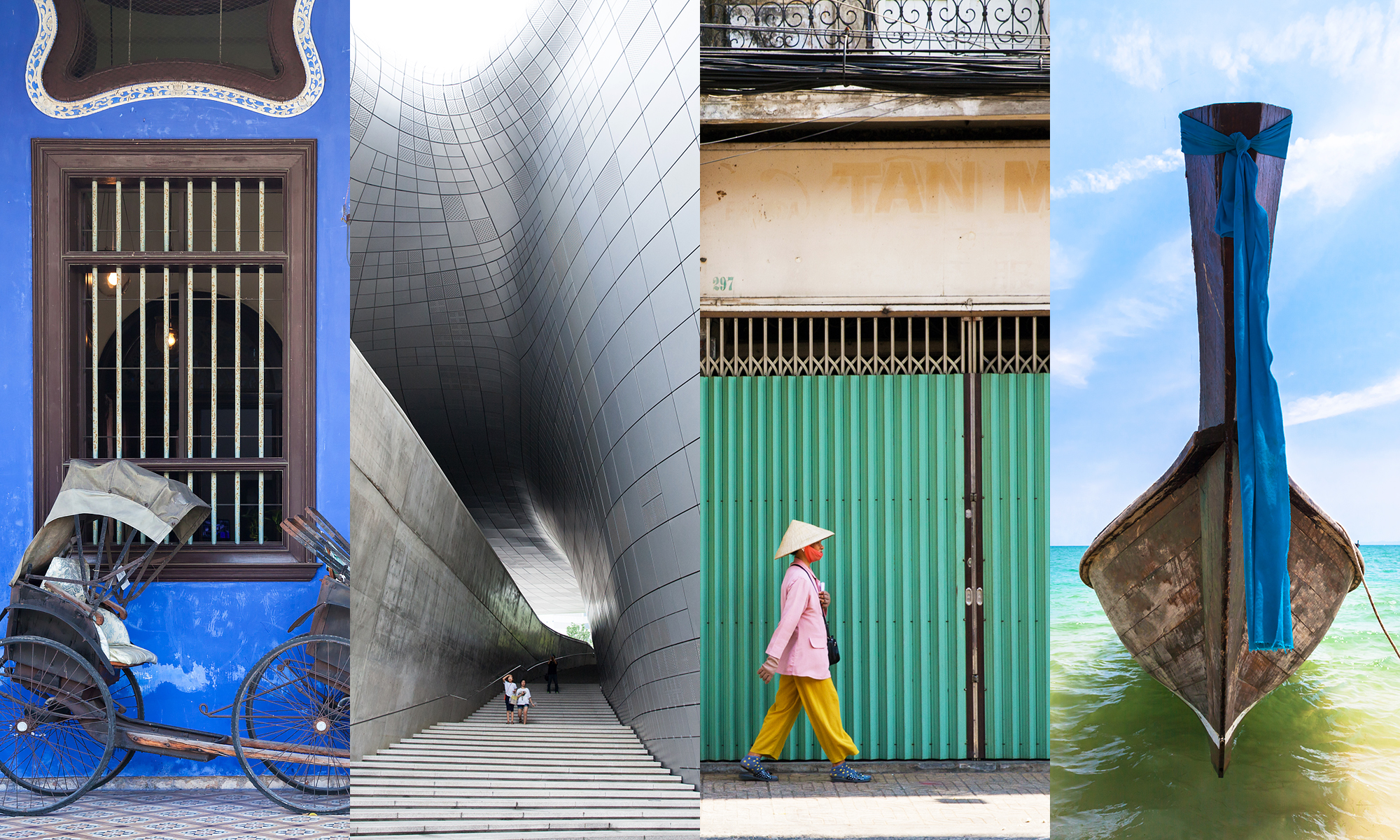Seoul city, the capital of South Korea, is a dynamic metropolis where modern skyscrapers, big shopping malls, global corporations offices, and bustling streets meet up with ancient palaces, tranquil temples, rapidly expanding green spaces, and traditional street markets.
Where to find history and traditions in Seoul?
Ancient Palaces
Seoul is a home to “Five Grand Palaces” built in late 14th —17th centuries by the Joseon ruling dynasty. Palaces are marvelous examples of the Korean architectural style. The most interesting ones are Gyeongbokgung and Changdeokgung.
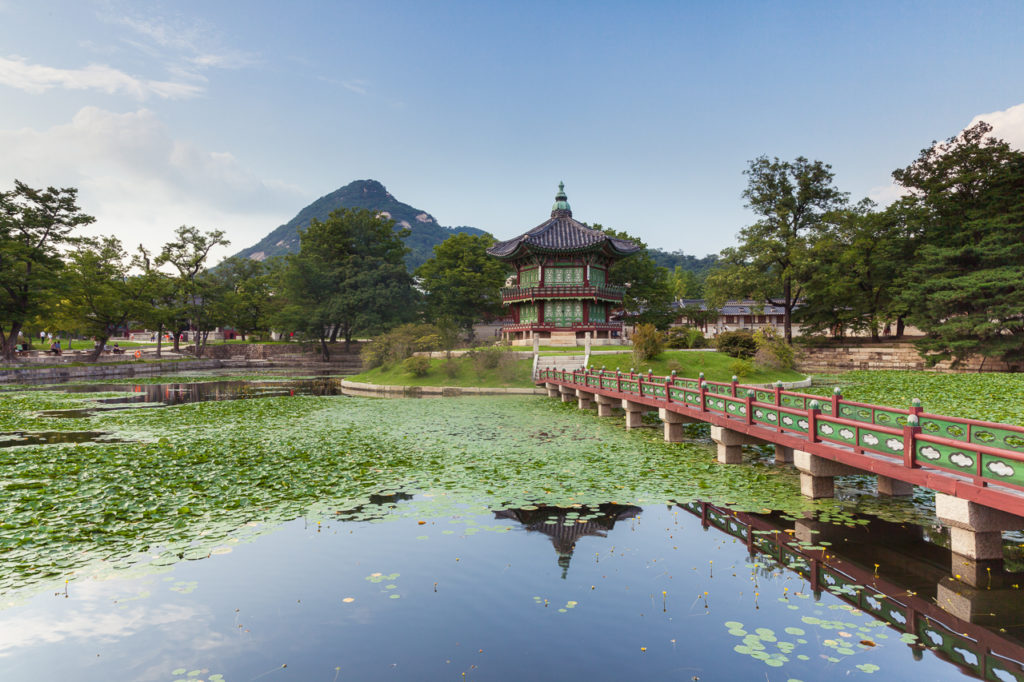
Gyeongbokgung Palace was the main royal palace, but it was seriously damaged during the Imjin War (1592–98) and the Empire of Japan period (1868–1947). The palace was reconstructed to its original form later.
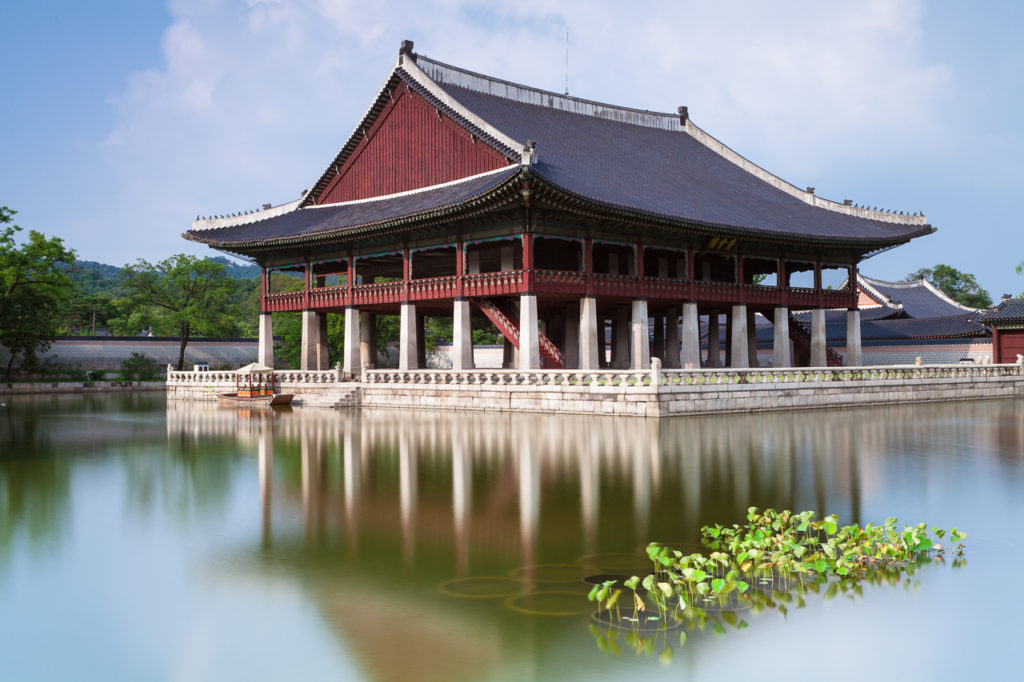
Changdeokgung Palace, the most beautiful of five, was listed as the UNESCO World Heritage Site for its “outstanding architecture and garden design”. Changdeokgung was the second palace first, but later it had been established as a primary palace while Gyeongbokgung was damaged.
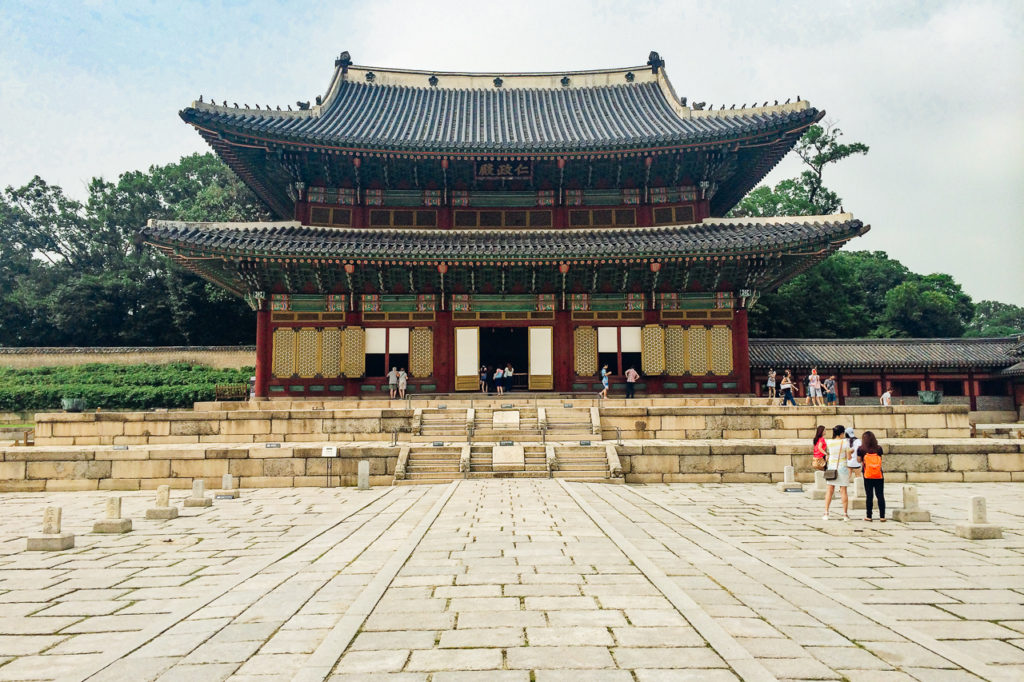
Gyeongbokgung Palace (경복궁): location, information
Changdeokgung Palace (창덕궁): location, information
National Museum of Korea
The National Museum of Korea is the biggest and the most representative museum in the country. It holds the wast collection of historical and cultural Korean treasures. It is one of the largest and most visited museums in Asia. The museum is hosted in the spectacular contemporary building surrounded by a park. The museum is open daily, and permanent exhibitions are free to visit.
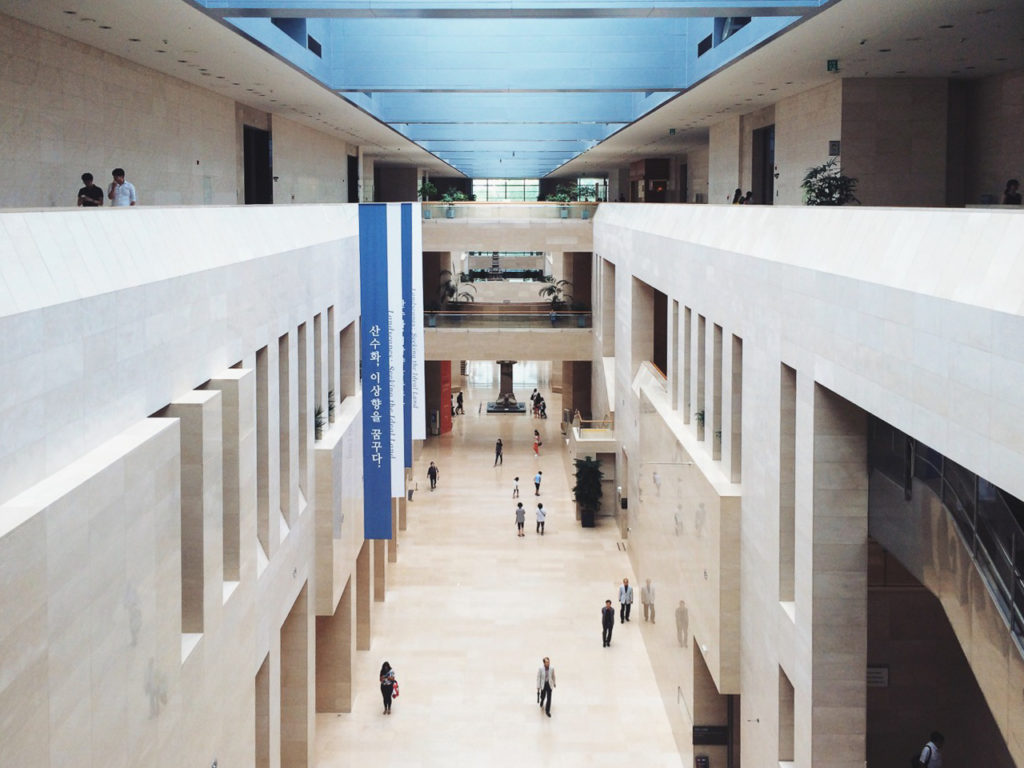
National Museum of Korea (국립중앙박물관): location, information, free admission
Bongeunsa Temple
Leafy grounds of this ancient Buddhist temple is the island of tranquility amidst energized Gangnam district. The temple is located on the slope of Sudo Mountain with splendid views to the city.
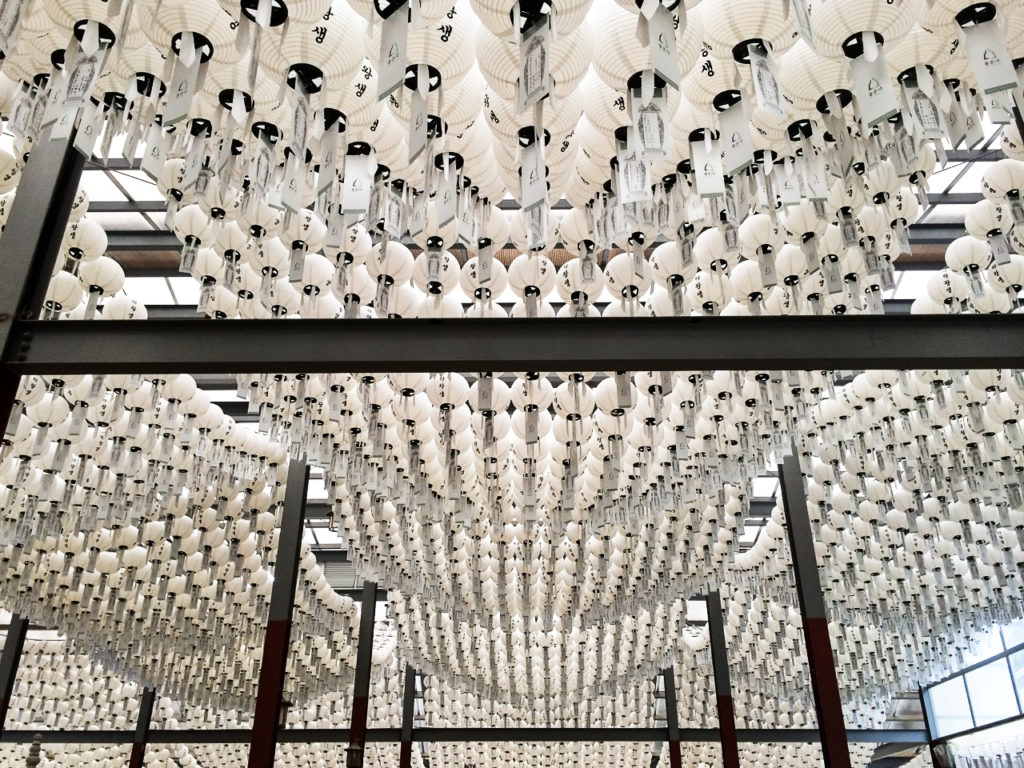
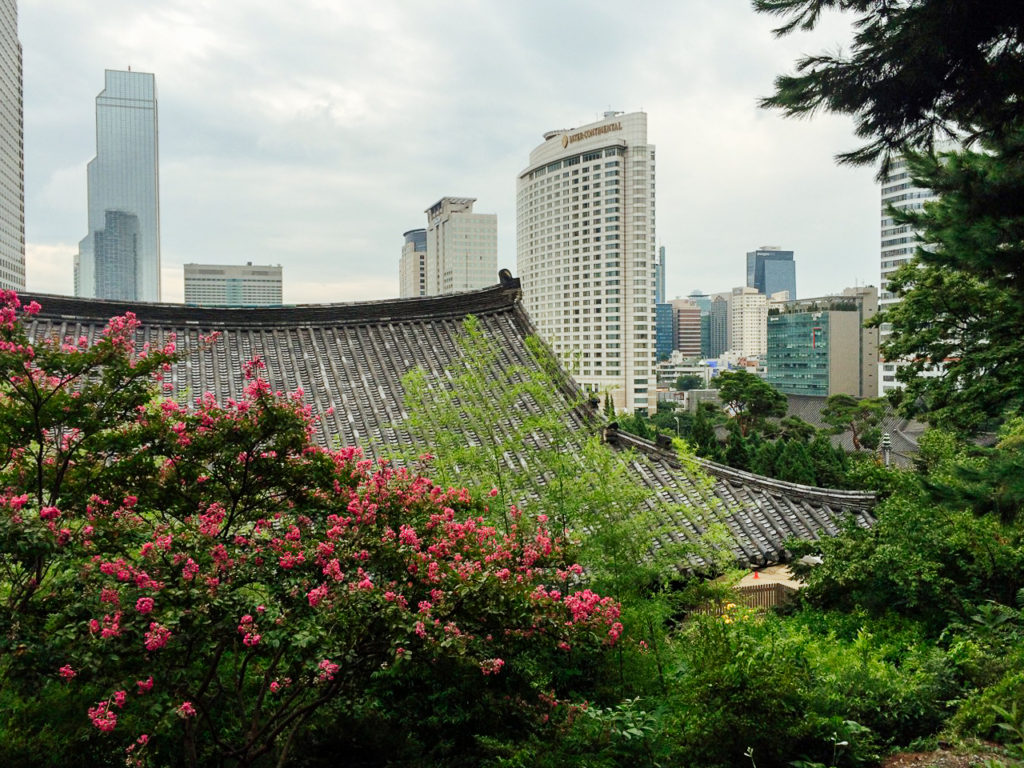
Bongeunsa Temple (봉은사): location, free admission
Gwangjang Market
Gwangjang Market is one of the oldest traditional street markets in Korea. Here, on the narrow crowded lines with hundreds of stalls, you may soak up the buzzing atmosphere of an old Asian street market and try local favorites sitting on a tight bench just before a cooking vendor.
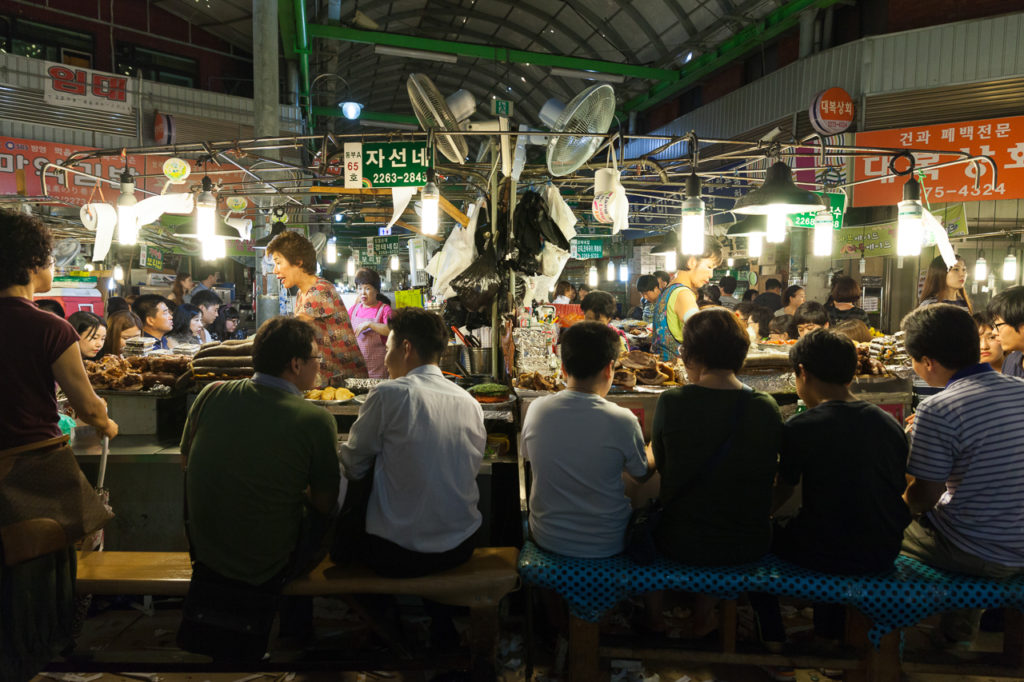
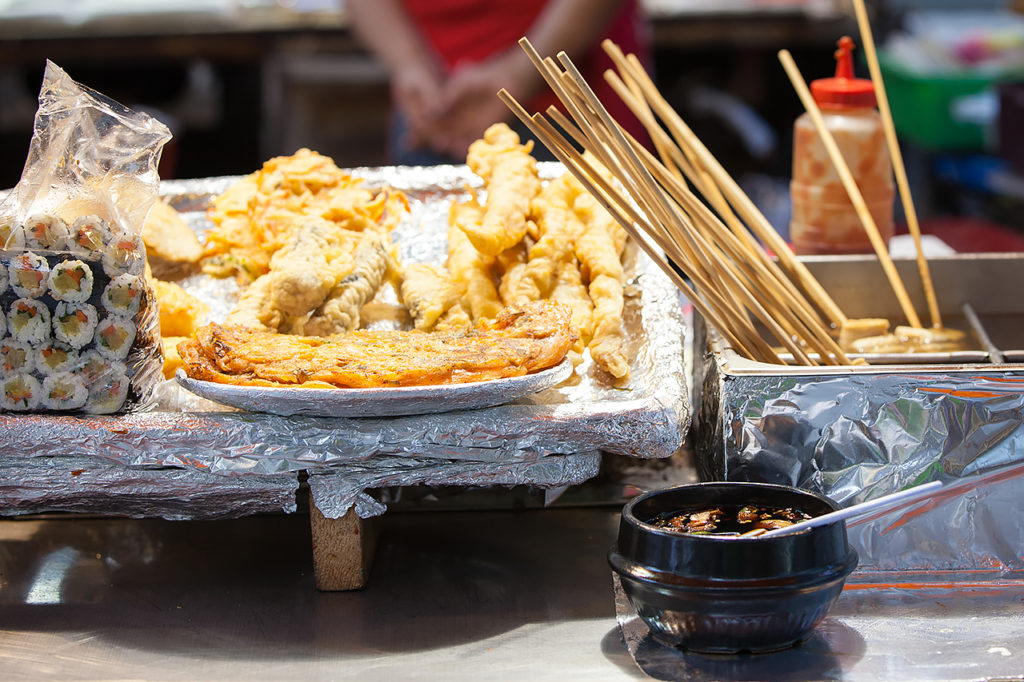
Gwangjang Market (광장시장): location
Hanok Villages
Hanok is a traditional Korean house. There are two places in Seoul where you may explore traditional houses: the Namsangol Hanok Village and the Bukchon Hanok Village.

The Namsangol Village is an open-air museum with restored Joseon-era houses, while the Bukchon is a residential area where people still live in traditional Hanok houses.
Namsangol Hanok Village (남산골 한옥마을): location, free admission
Bukchon Hanok Village (북촌한옥마을): location, free admission
Where to explore modern Seoul?
Dongdaemun Design Plaza
The Dongdaemun Design Plaza DDP is a remarkable futuristic building designed by Zaha Hadid. The Plaza is a cultural hub with exhibition spaces, retail stores, cafes mixed with remains of an ancient Seoul Fortress. The DDP is located in a popular shopping and touristic area called Dongdaemun.
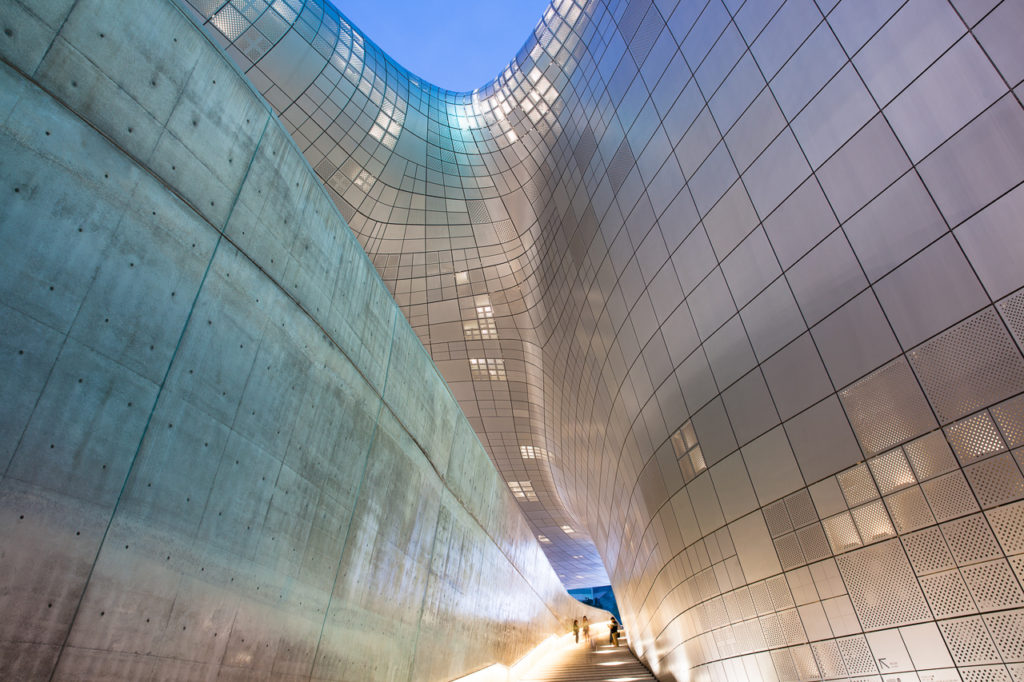
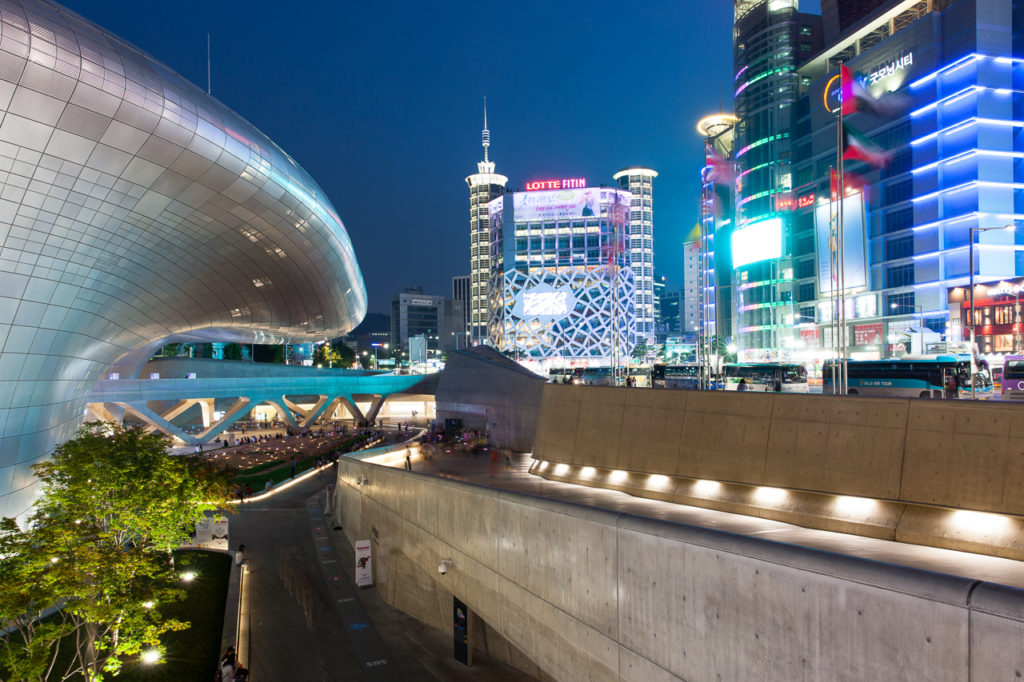
Dongdaemun Design Plaza DDP (동대문디자인플라자): location
Seoul City Hall
Seoul City Hall is a modern building in which government moved in 2012 from an old city hall located nearby. The new building is an eco-friendly project in which part of energy comes from environmental energy sources: solar, geothermal, thermal and photovoltaic. The most popular attraction of the building is the huge Green Wall in the entrance hall, the largest vertical garden in the world.
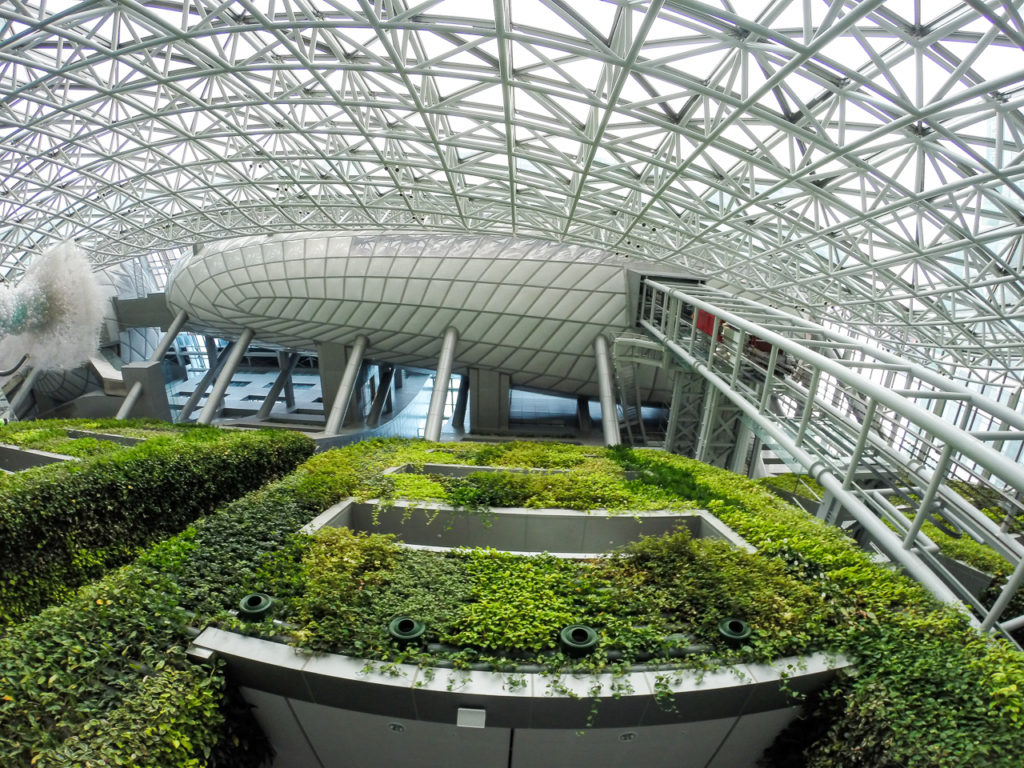
Seoul City Hall (서울특별시청): location, free admission
Cheonggyecheon Park
Cheonggyecheon Park is a result of the massive urban renewal project. The recreation area was created in the place of the highway which was elevated over the Cheonggyecheon stream.
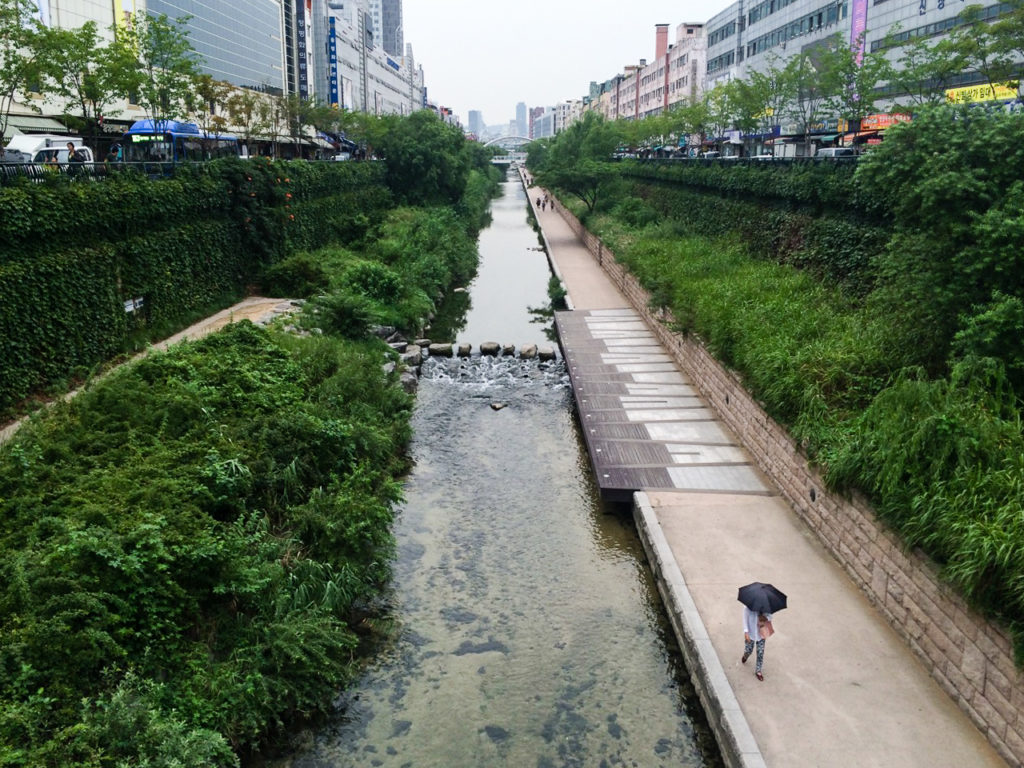
Cheonggyecheon (청계천): location
Banpo Bridge Rainbow Fountain
A usual city bridge turns into the world’s longest bridge fountain several times a day from April to October. When the sun goes down, the fountain is illuminated with rainbow-colored lights accompanied with music.
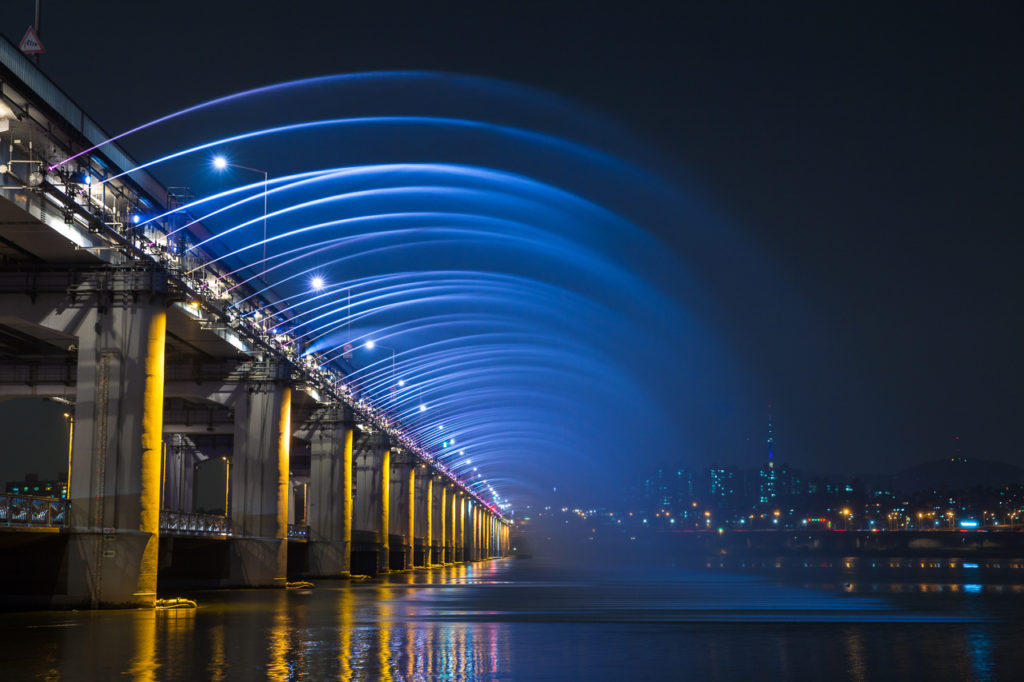
Banpo Bridge Rainbow Fountain (반포대교 달빛무지개분수): location
Myeong-dong and Gangnam-gu
Myeong-dong is the main shopping district of Seoul. The lively neon-lighted streets of the area are crowded with shoppers day and night.
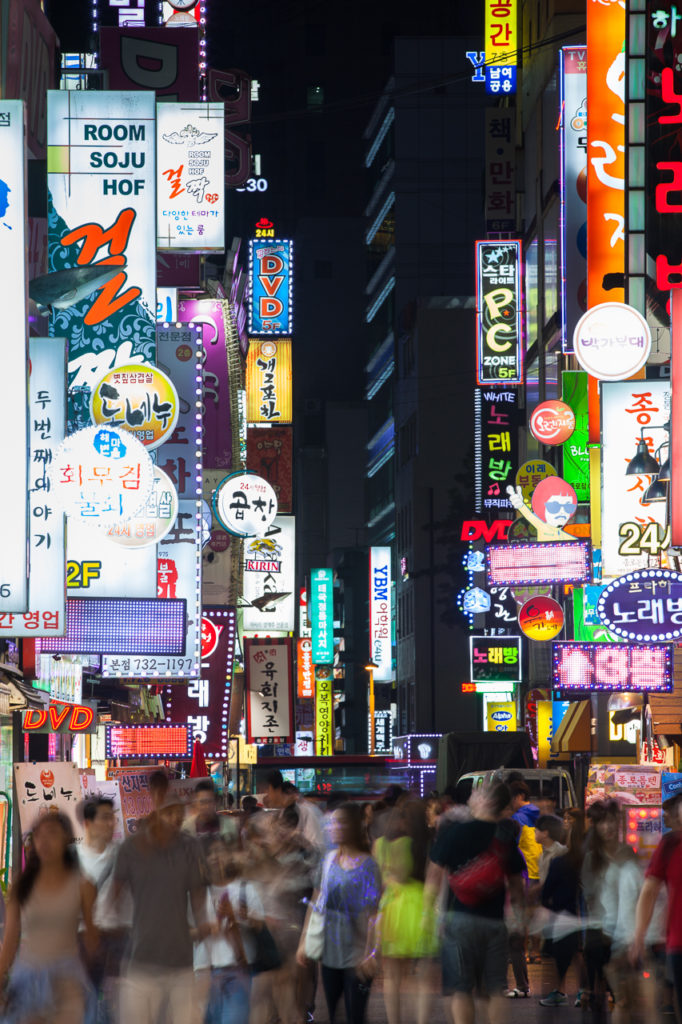
Gangnam-gu is the most wealthy district of Seoul with an extremely expensive real estate. It is also called “the Silicon Valley of Korea” due to the number of high-tech companies operating here.
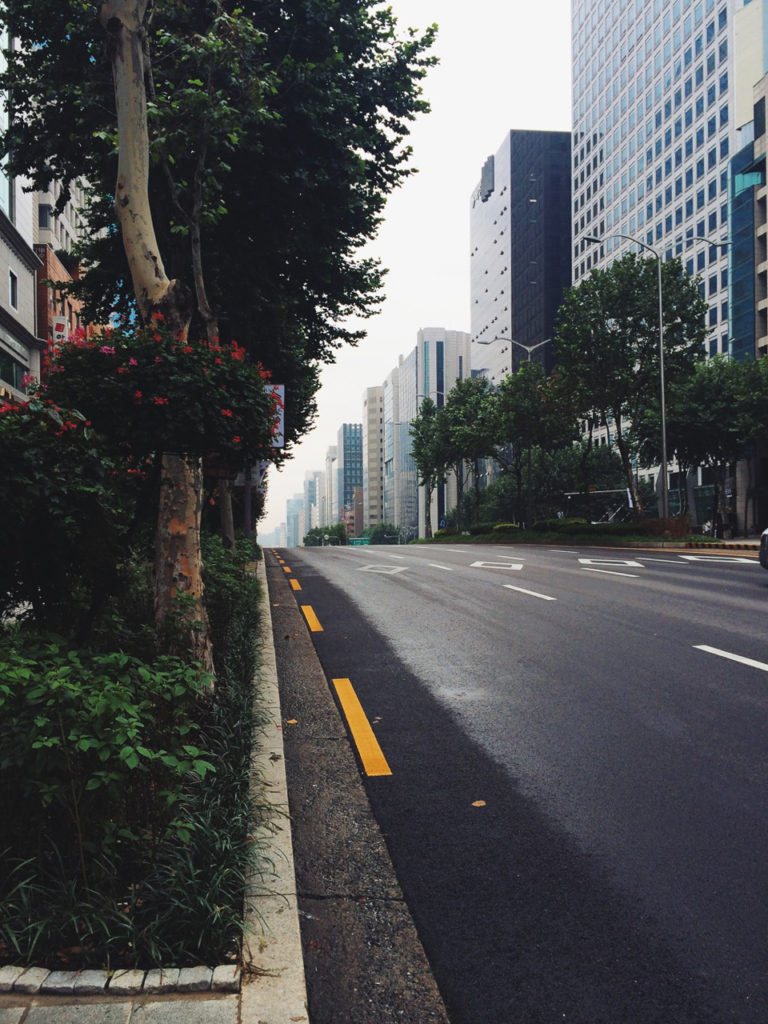
Myeong-dong (명동): location
Gangnam-gu (강남구): location
Love the post? Pin It!
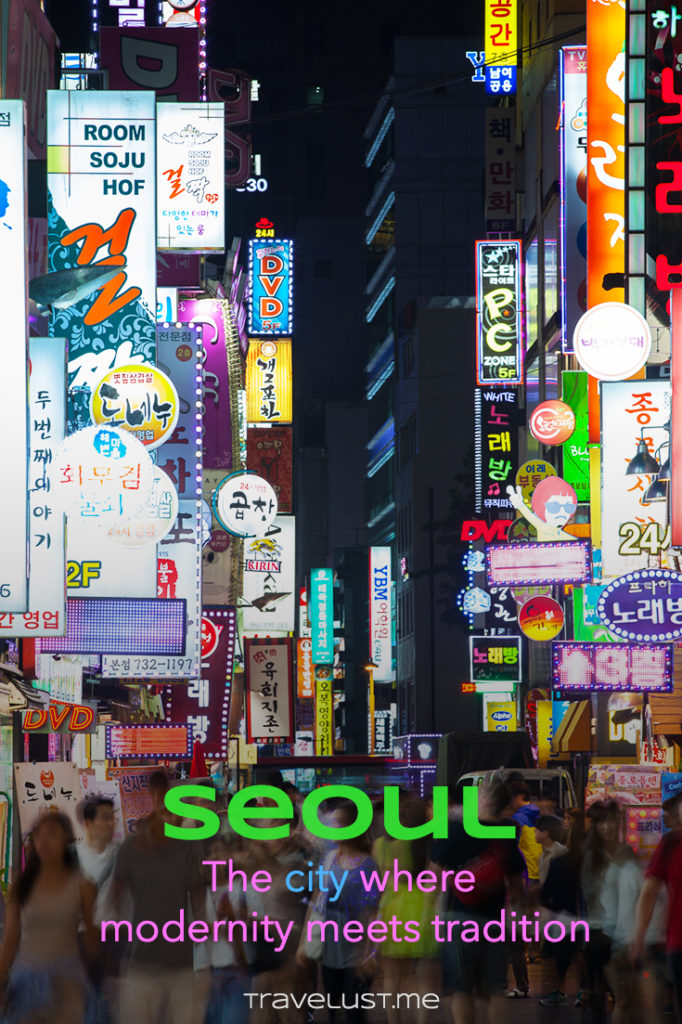
Photo credit: © Elena Ermakova, © Evgeny Ermakov. All rights reserved. Contact us here if you are interested in using our photos.
